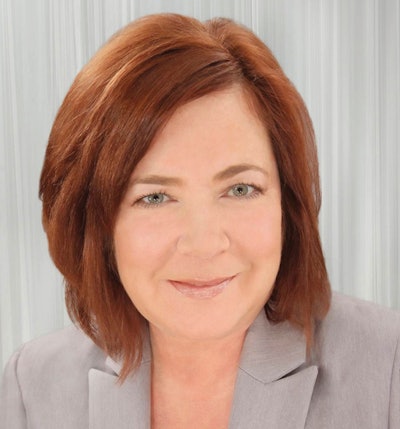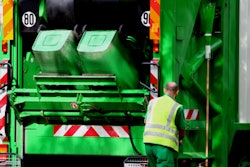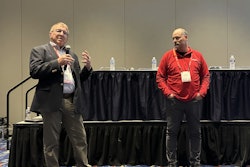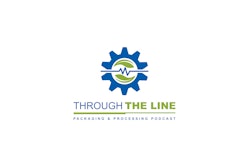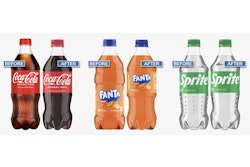Established just three years ago, new packaging association AMERIPEN (the American Institute for Packaging and the Environment) is on the fast track. Since its launch, the organization has undertaken several comprehensive research studies to gather data on the state of material recovery nationally and globally, freely sharing its findings with industry to advance the cause of optimized packaging. The group has also authored two brochures that communicate the value of packaging to replace the perception of packaging as waste.
In 2013, AMERIPEN named Donna Dempsey Executive Director of the organization. In this Q&A, Dempsey shares details on the association’s formation, goals, progress, and “passion.”
Packaging World:
Who and what inspired the formation of AMERIPEN?
Donna Dempsey:
We were formed in 2010. There were 10 founding companies, and they formed the organization because they felt there needed to be a material-neutral organization that represented the entire packaging value chain based on data to really help in the recovery and recycling of used packaging as well as communicate the value of packaging.
In what ways is AMERIPEN different from other associations related to packaging and the environment?
There are a lot of really good trade associations that represent packaging in some way or another. We are formed however to advocate and educate on behalf of packaging and the environment to legislators and other stakeholders. This focus perhaps attracts a different audience. And again, we think being material-neutral and data-driven separates us from other groups. Although I will tell you, having been in the trade association business for 22 years, I see more collaboration among packaging associations than I have ever seen before.
That’s kind of unusual, isn’t it?
Associations have limited time and money, and everyone’s plate is full. There is really no reason to for us to duplicate efforts when we can share and work together.
Can you name some of the associations AMERIPEN is working with?
I can, but there are so many of them. I was just on the phone with PAC Next and APR [the Association of Postconsumer Plastic Recyclers] and FPI [the Foodservice and Packaging Institute]. We were all at a meeting last week at SERDC [the Southeast Recycling Development Council]. There were quite a few associations there, which is great; it allowed us to have face time to share what we are doing.
How many members does the association currently have? What types of companies do they represent?
We currently have 30 members. They include a range of companies along the supply chain, such as waste management, all the different material suppliers—PLA, glass, aluminum, plastic, and paper—and all types of brand owners, among others.
I have an interesting story. Recently I was at a meeting with an agency, along with several AMERIPEN members. The purpose of the meeting was to share our findings and build upon the work that we’ve done. The person we were speaking with was, number one, a little bit confused that we were not there advocating, or as he said “lobbying,” for or against one particular item, that we were there to share data. Secondly, when he looked around the room, there were representatives from glass and plastic and PLA and waste management. The gentleman said, “How can you possibly represent all of these interests, which are so varied?” I didn’t have to say anything. One of our members said, “I am here with my AMERIPEN hat on. Our company wanted to be part of an organization that was material-neutral, represented the whole value chain, and was led by research. It’s not a matter of whether we like where the research brings us, but it’s what we can live with, because it’s what the research says.” I then said, “That’s our strength.” And I really do feel that way.
What is your background? Why did you decide to take the position of Executive Director of AMERIPEN?
I have a background in trade association management and several years of public policy. Most recently, for 10 years I represented plastic bag manufacturers. I had experience in talking about data and in being a spokesperson for the organization. When I looked at the position at AMERIPEN, it interested me because I thought it put all my skill sets together, and it expanded them. It went from one material to all materials. It also expanded my skill set into more end-of-life issues—the full life cycle of a product.
But the main thing that attracted me to AMERIPEN was the people and the companies they represented, and their passion for making a difference in the life cycle of their products. And it’s not only their passion. It’s the amount of time they give to AMERIPEN. As you can imagine, we’ve had members who have spent hundreds of hours during the past couple of years helping with the research. They do have their day jobs.
We also talk at the board and the executive board level very frequently; it’s a true team. We have the ability to act and react very quickly, which I also think is a strength of the organization. We don’t put on conferences; the association is really very, very work- and project-oriented.
One of the stated goals of AMERIPEN is to increase the understanding and communicate the value of packaging. Why is this important?
Our strategy is to educate people so that when they look at packaging, they don’t think of it as waste. Every material has a function and a job to do. You want to make sure your products arrive at their destination safely, you want to make sure your food products don’t make people ill, you want to extend the shelf life of your product. Packaging is also a huge employer of folks.
There seems to be a lot of discussion out there about source reduction, and I hope the tide is shifting a little bit. We talk about packaging optimization because packaging has a job to do.
Can you outline several of the projects that AMERIPEN has undertaken to communicate the value of packaging?
Before I got here, AMERIPEN produced a very well done six-page brochure, “Discover the Hidden Value of Packaging” (see pwgo.to/500) that highlights packaging as far as the economics, the environmental aspects, and the life cycle of packaging. The next piece was on poultry packaging, “Chicken and Packaging: A Sustainable Partnership” (see pwgo.to/501), that talks about how packaging reduces food-borne illnesses and increases shelf life. We also have two more brochures in the works that we are pretty excited about. There are so many areas where packaging adds value; we are selecting a couple at a time.
Another stated goal is to increase the recovery of used packaging. Why was this chosen as one of the main focuses of the organization?
Recovery of used packaging is just is a win-win proposition—for the consumer, for the company, for the haulers, for the MRFs [Material Recycling Facility]. For packaging recovery to be optimized, you need the data on where recovery is regionally appropriate and politically feasible so that there can be lower costs in the life cycle of a package, and certainly AMERIPEN members want their packages included in there.
Can you briefly summarize the projects the Recovery Work Group has been involved in? What are the next steps?
One of the projects I have been going on the road talking about and sharing at conferences is the 100 Cities Packaging Recovery survey [see pwgo.to/502], where we worked with Resource Recycling Systems to identify best practices for curbside recycling. Then we surveyed 100 Cities to see if there was a correlation between the level of recycling and these best practices and policies. There was a direct correlation. And we found there is room within the current infrastructure to increase recycling. That was a good marriage with our financial platforms analysis [“AMERIPEN Analysis of Strategies and Financial Platforms to Increase the Recovery of Used Packaging,” see pwgo.to/503], where we looked at these global systems and came out with three recommended approaches.
We have worked very hard. Eighty of the 100 cities filled out a very long questionnaire. If they didn’t fill it out, we called them to get it. So, we have 80 basic profiles of cities around the country, 16 of which had enough data to be extended profiles. Our next step is to work in a strategic manner to have discussions with various cities to say, “Hey, we don’t know everything about this, but here is some of the research, here are some of the barriers you have identified to increasing the recovery of used packaging, and here is the research we have created that shows areas of opportunity and gaps.”
I think people need to take into consideration that we just are tiptoeing out with the findings. This is research our members felt very strongly about; it has never been done before. I mean, take the financial platforms: That is the first time that recovery and recycling programs across the world have been examined in detail and compared in terms of both environmental and economic effectiveness. We wanted to know what global systems support improved packaging recovery and system financing. That data did not exist. We feel that’s valuable, and we are starting to put that into action.
Has AMERIPEN made any progress with its third goal—to analyze varied approaches and alternatives to extended producer responsibility (EPR) for packaging?
We identified many global strategies and financing mechanisms to increase the recovery of used packaging, such as pay as you throw, consumer-based disposal bans, mandatory recycling, EPR, and others. We researched them all against the same criteria: strength, challenges, financial stability, will it change behavior, etc. According to the research, EPR was not one of the three recommended approaches that floated to the top because it was not one of the most effective, efficient ways to handle used packaging during the life cycle of a package.
Does AMERIPEN plan to lobby on behalf of its members in terms of legislation?
If there is legislation on packaging, and if we are asked, we will be happy to present our data. Certainly we do have three recommended policy approaches, so we would be advocating for those.
I know it’s a matter of semantics, but we use the word “advocating” rather than lobbying because we are giving municipalities and cities the research, having a two-way dialogue to determine if it’s regionally appropriate and politically feasible, and discussing what they have tried and what they haven’t tried. That’s the approach we are taking.
